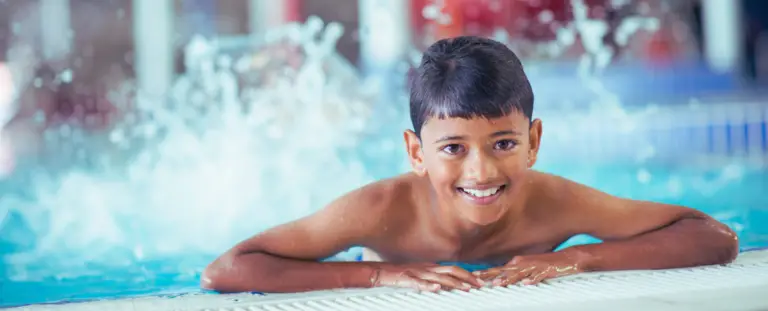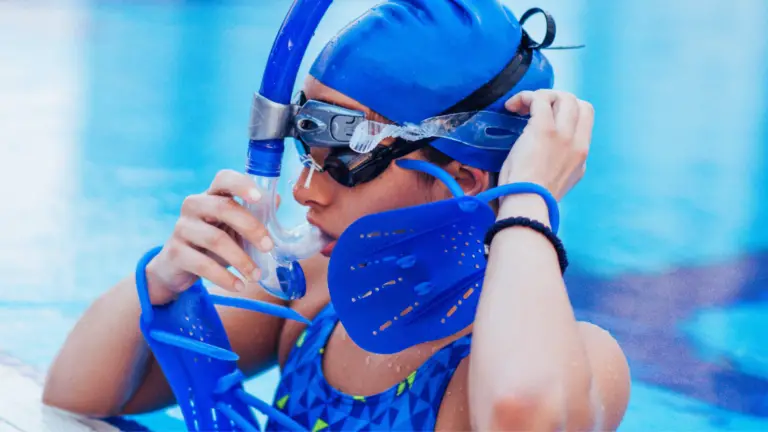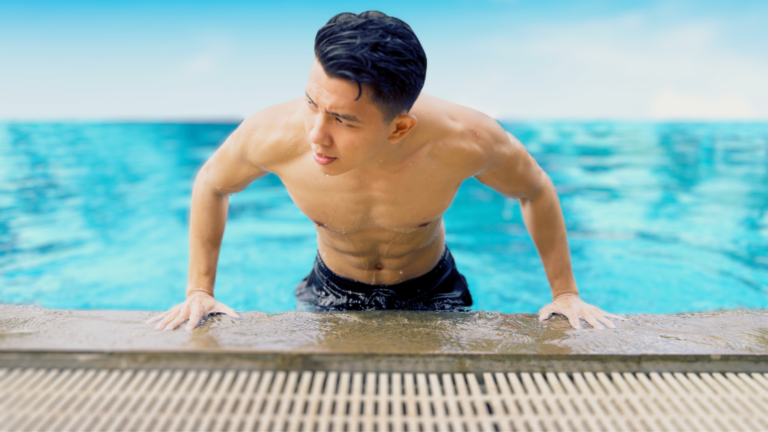Are you looking to take your swim game to the next level? Swim endurance workouts could be just what you need to push yourself beyond limits and achieve your goals. Whether you’re a seasoned pro or just starting out, swim endurance training can help increase your cardiovascular health, build overall strength and stamina, and improve your technique in the water. With various approaches to choose from – including distance swimming, interval training, and circuit exercises – you can mix things up and challenge yourself in new ways. So don’t settle for mediocrity; take your swim to the max with an endurance workout routine today!
Introduction to Swim Endurance
Swim endurance refers to a swimmer’s ability to maintain a consistent speed and stroke rate over a prolonged period. It is a crucial aspect of swimming, especially for distance swimmers and triathletes. Building swim endurance involves a combination of techniques, including efficient stroke mechanics, interval training, and specific endurance workouts.
The Importance of Building Endurance in Swimming
Building endurance in swimming is not just about swimming longer distances. It’s about improving your overall performance, speed, and efficiency in the water. Whether you’re a competitive swimmer aiming to shave seconds off your time or a fitness swimmer looking to swim longer without fatigue, enhancing your swim endurance is key.
Understanding Swim Endurance
Swim endurance is the product of several factors, including cardiovascular fitness, muscular endurance, and swimming efficiency. It’s not just about how long you can swim but also how effectively you can maintain your speed and technique over that duration. Understanding these elements is the first step toward developing effective swim endurance workouts.
Benefits of Enhanced Swim Endurance
Enhancing your swim endurance has numerous benefits. It allows you to swim longer distances without fatigue, maintain a consistent speed throughout your swim, and recover more quickly between swims or intervals. Improved endurance can also contribute to better swimming technique, as fatigue often leads to form breakdown.
How Endurance Affects Your Swim Performance
Endurance plays a significant role in swim performance. The greater your endurance, the longer you can maintain your speed and technique, which is particularly important in distance swimming and triathlon events. Furthermore, building endurance can help improve your aerobic capacity, enabling you to swim at higher intensities with less fatigue.
In the next section, we’ll delve into the essential elements of swim endurance workouts and provide sample workouts for different skill levels. Stay tuned!
Swim Smooth and Triathlete offer additional resources on understanding and building swim endurance.
Essential Elements of Swim Endurance Workouts
Swim endurance workouts are designed to challenge and improve your cardiovascular fitness, muscular endurance, and swimming efficiency. These workouts often incorporate a variety of elements, including stroke efficiency, interval training, main sets and sprints, specific breathing patterns, and the use of equipment.
The Role of Stroke Efficiency in Endurance
Stroke efficiency is a critical component of swim endurance. The more efficient your stroke, the less energy you expend for each stroke, allowing you to swim longer distances without fatigue. Stroke efficiency involves several factors, including body position, stroke mechanics, and timing. Regular technique drills can help improve your stroke efficiency and, consequently, your swim endurance.
The Importance of Interval Training
Interval training involves alternating periods of high-intensity swimming with periods of rest or lower-intensity swimming. This type of training is highly effective for building swim endurance as it challenges both your aerobic and anaerobic energy systems, leading to improvements in cardiovascular fitness and muscular endurance. Interval training can be incorporated into your swim workouts in various ways, such as through timed sets, distance sets, or sprint intervals.
Incorporating Main Set and Sprint in Workouts
The main set of your swim workout is where you focus on the primary goal of the session, which could be endurance, speed, technique, or a combination of these. For endurance workouts, the main set often involves longer, continuous swims or repeated intervals with short rest periods. Incorporating sprints into your workouts can also enhance your endurance by improving your anaerobic fitness and ability to maintain speed over longer distances.
The Impact of Breathing Pattern on Endurance
Your breathing pattern can significantly impact your swim endurance. Efficient, controlled breathing helps maintain a steady oxygen supply to your muscles, delaying the onset of fatigue. It also plays a role in maintaining body balance and rhythm in the water. Practicing different breathing patterns, such as bilateral breathing, can help improve your breathing efficiency and swim endurance.
The Use of Equipment: Snorkel, Lap Counters, etc.
Swimming equipment like snorkels, lap counters, and pull buoys can be useful tools for enhancing your swim endurance workouts. For example, snorkels can help improve your body alignment and breathing technique, while lap counters can help track your distance and pace during long swims.
My Favorite Swim Endurance Workouts
Here are some sample swim endurance workouts for different skill levels. Feel free to adjust the distances or intervals based on your fitness level and preferences. Make sure to maintain proper form and technique throughout the workouts and listen to your body.
Stay hydrated, and enjoy your swimming sessions!
Beginner Endurance Workouts
If you’re new to swim endurance training, these beginner workouts are a perfect starting point. Designed to gradually build your stamina and confidence in the water, these workouts focus on maintaining a comfortable pace while increasing your overall swim distance. Remember to prioritize proper technique and listen to your body as you embark on your swimming journey.
Warm-Up
- 5-10 minutes of easy swimming. Focus on gradually increasing your heart rate and warming up your muscles.
Pre-set
- 4 x 50 yards freestyle, with 15 seconds rest between each set. Focus on maintaining a steady pace and good technique.
Main-Set
- 8 x 100 yards freestyle, with 20 seconds rest between each set. Try to maintain a consistent pace throughout the sets, focusing on your breathing and stroke technique.
Cool Down
- 5-10 minutes of easy swimming, gradually slowing down your pace. Include some gentle stretches for your shoulders, arms, and legs.
Warm-Up
- 5-10 minutes of easy swimming. Focus on gradually increasing your heart rate and warming up your muscles.
Pre-set
- 4 x 50 yards kickboard, with 15 seconds rest between each set. Focus on strengthening your leg muscles and kicking technique.
Main-Set
- 4 x 200 yards freestyle, with 30 seconds rest between each set. Aim to maintain a steady pace throughout the sets, focusing on your breathing and stroke efficiency.
Cool Down
- 5-10 minutes of easy swimming, gradually slowing down your pace. Include some gentle stretches for your shoulders, arms, and legs.
Warm-Up
- 5-10 minutes of easy swimming. Focus on gradually increasing your heart rate and warming up your muscles.
Pre-set
- 4 x 50 yards backstroke, with 15 seconds rest between each set. Focus on good body position and using your arms and legs efficiently.
Main-Set
- 6 x 100 yards freestyle, with 30 seconds rest between sets. Try to maintain a consistent pace throughout the sets, focusing on your breathing and stroke technique.
Cool Down
- 5-10 minutes of easy swimming, gradually slowing down your pace. Include some gentle stretches for your shoulders, arms, and legs.
Warm-Up
- 5-10 minutes of easy swimming. Focus on gradually increasing your heart rate and warming up your muscles.
Pre-set
- 4 x 50 yards butterfly kick, with 15 seconds rest between each set. Use a kickboard and focus on developing a strong butterfly kick technique.
Main-Set
- 4 x 200 yards freestyle, with 30 seconds rest between each set. Try to maintain a consistent pace throughout the sets, focusing on your breathing and stroke technique.
Cool Down
- 5-10 minutes of easy swimming, gradually slowing down your pace. Include some gentle stretches for your shoulders, arms, and legs.
Warm-Up
- 5-10 minutes of easy swimming. Focus on gradually increasing your heart rate and warming up your muscles.
Pre-set
- 4 x 50 yards breaststroke, with 15 seconds rest between each set. Focus on maintaining a good body position and using your arms and legs efficiently.
Main-Set
- 10 x 50 yards freestyle, with 15 seconds rest between each set. Alternate between fast and slow pace for each set. Focus on your stroke technique during the slow-pace sets and push your speed during the fast-pace sets.
Cool Down
- 5-10 minutes of easy swimming, gradually slowing down your pace. Include some gentle stretches for your shoulders, arms, and legs.
Intermediate Endurance Workouts
For those who have already built a solid foundation of swimming endurance, these intermediate workouts offer a stepping stone towards more challenging sessions. You’ll find a mix of intervals and stroke variations, helping you improve your speed and endurance while keeping your workouts engaging and rewarding.
Warm-Up
- 10 minutes of easy swimming, including a mix of freestyle, backstroke, and breaststroke to gradually increase your heart rate and warm up your muscles.
Pre-set
- 4 x 100 yards freestyle, with 15 seconds rest between each set. Focus on maintaining a steady pace and good technique.
Main-Set
- 6 x 200 yards freestyle, with 20 seconds rest between each set. Alternate between a moderate pace and a faster pace for each set.
Cool Down
- 5-10 minutes of easy swimming, gradually slowing down your pace. Include some gentle stretches for your shoulders, arms, and legs.
Warm-Up
- 10 minutes of easy swimming, incorporating drills such as one-arm freestyle, sculling, and kicking to activate different muscle groups and improve technique.
Pre-set
- 4 x 50 yards butterfly, with 15 seconds rest between each set. Focus on maintaining a strong kick and rhythm throughout.
Main-Set
- 4 x 400 yards freestyle, with 30 seconds rest between each set. Maintain pace, focus on proper breathing and stroke efficiency.
Cool Down
- 5-10 minutes of easy swimming, gradually slowing down your pace. Include some gentle stretches for your shoulders, arms, and legs.
Warm-Up
- 10 minutes of easy swimming, incorporating light kicking and pulling exercises to engage different muscle groups and increase blood flow.
Pre-set
- 6 x 50 yards backstroke, with 15 seconds rest between each set. Focus on maintaining good body position and a strong kick.
Main-Set
- 10 x 100 yards freestyle, with 15 seconds rest between each set. Alternate between a moderate and fast pace for each set, focusing on maintaining technique and speed during the faster sets.
Cool Down
- 5-10 minutes of easy swimming, gradually slowing down your pace. Include some gentle stretches for your shoulders, arms, and legs.
Warm-Up
- 10 minutes of easy swimming, incorporating light kicking and pulling exercises to engage different muscle groups and increase blood flow.
Pre-set
- 6 x 75 yards kickboard, with 15 seconds rest between each set. Focus on maintaining a strong and steady kick.
Main-Set
- 12 x 100 yards freestyle, with 15 seconds rest between each set. Alternate between a moderate and fast pace for each set, focusing on speed and maintaining technique during the fast sets.
Cool Down
- 5-10 minutes of easy swimming, gradually slowing down your pace. Include some gentle stretches for your shoulders, arms, and legs.
Warm-Up
- 10 minutes of easy swimming, incorporating light kicking and pulling exercises to engage different muscle groups and increase blood flow.
Pre-set
- 4 x 100 yards individual medley, with 20 seconds rest between each set. Perform one lap of each stroke (butterfly, backstroke, breaststroke, freestyle) in order.
Main-Set
- 8 x 200 yards freestyle, with 30 seconds rest between each set. Focus on maintaining a consistent and strong pace throughout the sets.
Cool Down
- 5-10 minutes of easy swimming, gradually slowing down your pace. Include some gentle stretches for your shoulders, arms, and legs.
Advanced Endurance Workouts
Ready to take your swim endurance to the next level? These advanced workouts are designed to push your limits and enhance your overall performance. With longer distances, faster intervals, and more complex sets, these workouts will challenge even seasoned swimmers, providing an avenue to achieve peak endurance and reach your swimming goals.
Warm-Up
- 10-15 minutes of easy swimming, incorporating a variety of strokes to gradually increase your heart rate and warm up your muscles.
Pre-set
- 4 x 200 yards freestyle, with 15 seconds rest between each set. Focus on maintaining a strong pace and efficient technique.
Main-Set
- 8 x 400 yards freestyle, with 20 seconds rest between each set. Aim to maintain a consistent and challenging pace throughout the sets.
Cool Down
- 5-10 minutes of easy swimming, gradually slowing down your pace. Include some gentle stretches for your shoulders, arms, and legs.
Warm-Up
- 10-15 minutes of easy swimming, incorporating drills and underwater kicking to activate different muscle groups and refine your technique.
Pre-set
- 4 x 100 yards individual medley, with 15 seconds rest between each set. Perform one lap of each stroke in order.
Main-Set
- 6 x 500 yards freestyle, with 30 seconds rest between each set. Keep a strong and consistent pace, focus on breathing and stroke efficiency.
Cool Down
- 5-10 minutes of easy swimming, gradually slowing down your pace. Include some gentle stretches for your shoulders, arms, and legs.
Warm-Up
- 10-15 minutes of easy swimming, incorporating some dynamic stretches and explosive movements to activate your muscles and increase your range of motion.
Pre-set
- 8 x 50 yards butterfly, with 10 seconds rest between each set. Focus on maintaining a powerful and efficient butterfly technique.
Main-Set
- 10 x 300 yards freestyle, with 20 seconds rest between each set. Alternate between a moderate pace and a fast pace for each set, pushing your limits during the fast sets.
Cool Down
- 5-10 minutes of easy swimming, gradually slowing down your pace. Include some gentle stretches for your shoulders, arms, and legs.
Warm-Up
- 10-15 minutes of easy swimming, incorporating drills and underwater kicking to activate different muscle groups and refine your technique.
Pre-set
- 4 x 200 yards individual medley, with 15 seconds rest between each set. Perform two laps of each stroke in order.
Main-Set
- 12 x 100 yards freestyle, with 15 seconds rest between each set. Alternate between a moderate pace and a fast pace for each set, focusing on maintaining technique and speed during the fast sets.
Cool Down
- 5-10 minutes of easy swimming, gradually slowing down your pace. Include some gentle stretches for your shoulders, arms, and legs.
Warm-Up
- 10-15 minutes of easy swimming, incorporating drills and sculling exercises to activate different muscle groups and improve your technique.
Pre-set
- 6 x 100 yards kickboard, with 15 seconds rest between each set. Focus on maintaining a strong and powerful kick, using a kickboard for support.
Main-Set
- 10 x 200 yards freestyle, with 15 seconds rest between each set. Alternate between a fast pace and a recovery pace for each set, challenging your speed and endurance.
Cool Down
- 5-10 minutes of easy swimming, gradually slowing down your pace. Include some gentle stretches for your shoulders, arms, and legs.
Whether you’re just starting or a seasoned swimmer, incorporating endurance workouts into your training regimen can lead to substantial improvements in your overall performance. By gradually increasing distances, incorporating intervals, and maintaining proper technique, you’ll not only enhance your stamina but also develop mental resilience. Remember to enjoy the process and celebrate your progress, as swimming is not only an excellent form of exercise but also a refreshing and enjoyable way to stay fit and healthy. Keep pushing yourself, stay hydrated, and dive into the pool with confidence during each swimming session.
Interested in more free workouts? Check out our Swimming Workouts & Training category to discover more effective drills and exercises that will take your swimming skills to the next level. Whether you’re a beginner or a seasoned swimmer, these training resources will help you achieve your aquatic goals and excel in the pool. 🏊♂️💪
FAQ
Conclusion
Building swim endurance is a journey that requires consistency, proper technique, and a well-structured training plan. Whether you’re a beginner looking to swim longer distances or an advanced swimmer aiming to improve your speed and efficiency, the principles and workouts outlined in this guide can help you reach your goals.
Remember, every swimmer is unique, and what works best for one person may not work as well for another. Listen to your body, adjust your workouts as needed, and don’t hesitate to seek guidance from a swim coach or trainer. With time, patience, and dedication, you can significantly improve your swim endurance and enjoy the many benefits that come with it. Happy swimming!




